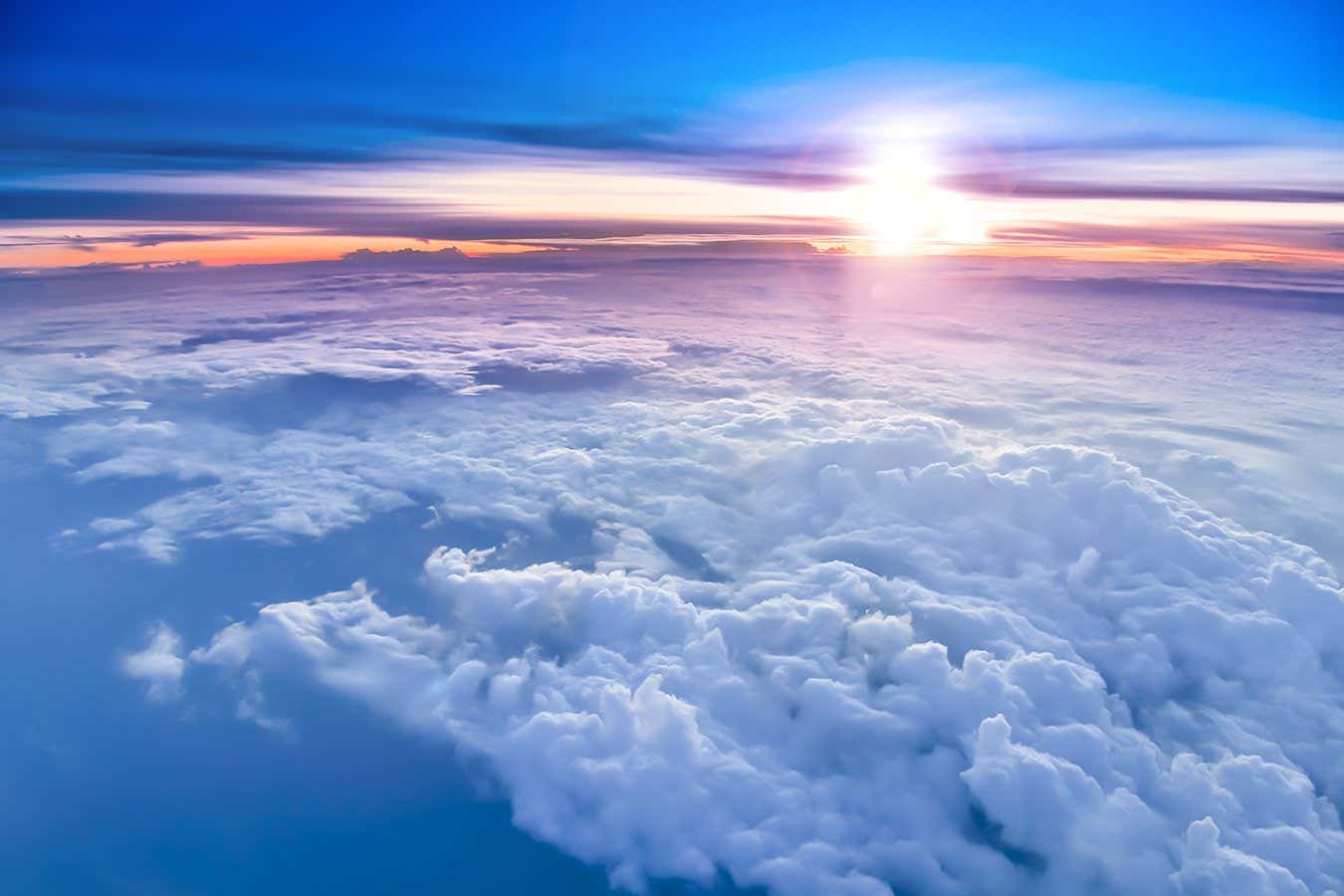
High up in the stratosphere, there are strange sounds
Shutterstock/Chaleephoto
Solar-powered balloons floating in the stratosphere have recorded low-frequency sounds of mysterious origin.
“When we started flying balloons years ago, we didn’t really know what we’d hear,” says Daniel Bowman at Sandia National Laboratories in New Mexico. “We learned how to identify sounds from explosions, meteor crashes, aircraft, thunderstorms and cities. But virtually every time we send balloons up, we find sounds that we cannot identify.”
Bowman and his colleagues measured infrasound signals – sounds with a frequency so low they are inaudible to human ears – using solar-powered balloons floating 20 kilometres high.
The researchers built balloons about 7 metres wide and made of thin plastic. They filled the balloons with charcoal powder, which heats up in bright sunlight and makes the balloon float. Unlike weather balloons, which rise until they pop, these DIY solar-powered balloons coasted in the stratosphere for hours, carrying infrasound sensors over hundreds of kilometres. The researchers deployed more than 50 balloons over the course of seven years starting in 2016.
The data they collected showed that the stratosphere sounds quite different than the surface of Earth. On the ground, infrasound sensors pick up signals that have been deflected by winds on their way down, but the balloons floated above those winds – they recorded signatures of turbulence in other parts of the atmosphere, and infrasonic sounds of marine storms. However, Bowman says that many infrasound signals from the stratosphere didn’t have an obvious origin. He presented the work at a meeting of the Acoustical Society of America in Chicago, Illinois, on 11 May.
These mysterious signals could be related to types of atmospheric turbulence that have never been recorded before, but infrasounds in the stratosphere have only rarely been explored before so it is hard to make educated guesses, says Bowman.

The research team inflating a solar balloon with infrasound sensors attached
Darielle Dexheimer/Sandia National Laboratories
He says one of the first balloon studies of this kind was a US Army Air Forces experiment code-named Project Mogul, which sought to detect infrasound signals of nuclear weapons tests in the Soviet Union in the 1940s. One of Project Mogul’s balloons crashed in Roswell, New Mexico, which brought the top secret programme into the public eye. The cover-up to conceal the balloon’s purpose sparked UFO conspiracies, and most of the data from consequent balloon flights, ending in the 1960s, were kept classified, says Bowman.
Roger Waxler at the University of Mississippi says he isn’t surprised by enigmatic infrasound signals appearing in recordings of the stratosphere. “On the ground you can put sensors into arrays and know exactly where they are relative to each other, which helps calculate where an infrasound came from. With balloons, they just go where they go,” he says.
Bowman is collaborating with NASA to develop similar balloon technology for an even less explored place: the clouds of Venus. He and his colleagues want to adapt their solar-powered balloons to record infrasound above the surface of Venus, which could help chronicle the planet’s seismic activity.
Topics:
